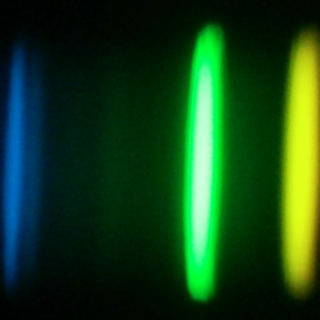Sitnova, T. M.; Matsuno, T.; Yuan, Z.; Martin, N. F.; Banerjee, P.; Sestito, F.; Venn, K. A.; González Hernández, J. I.
Bibliographical reference
Monthly Notices of the Royal Astronomical Society
Advertised on:
12
2023
Citations
5
Refereed citations
4
Description
We report the serendipitous discovery of a very metal-poor (VMP) Li-rich giant star (Teff = 4690 ± 80 K, log g = 1.34 ± 0.13, [Fe/H] = -2.43 ± 0.07). We analyse the Li I 6103 and 6707 Å lines accounting for departures from local thermodynamic equilibrium (NLTE) and correcting for 3D effects using literature data, which yields a lithium abundance log ɛLi = 3.42 ± 0.07. Comparing lithium abundances from the two lines, in 1D NLTE we measure the isotope ratio 6Li/7Li = 1.64$^{+1.49}_{-1.08}$ per cent. When correcting for 3D effects, we detect the fragile 6Li isotope at 2-sigma level and the ratio 6Li/7Li = 5.65$^{+5.05}_{-2.51}$ per cent. To our knowledge, this is the first 6Li/7Li measurement in an extremely Li-rich VMP star. The Cameron-Fowler mechanism, which is proposed to produce Li-rich stars, does not imply 6Li production and is therefore inconsistent with our measurement when applying 3D corrections. We also derive NLTE abundances for 16 elements, most of which show similar abundances to those found in VMP stars. Sodium is an exception: [Na/Fe]NLTE1D = 0.07 ± 0.03, which is 0.5 dex higher than what is typical for VMP stars. This star joins the sample of rare Li-rich VMP stars, and we offer a novel way to constrain the source of lithium in such stars through isotope ratio measurements.
Related projects

Chemical Abundances in Stars
Stellar spectroscopy allows us to determine the properties and chemical compositions of stars. From this information for stars of different ages in the Milky Way, it is possible to reconstruct the chemical evolution of the Galaxy, as well as the origin of the elements heavier than boron, created mainly in stellar interiors. It is also possible to
Carlos
Allende Prieto